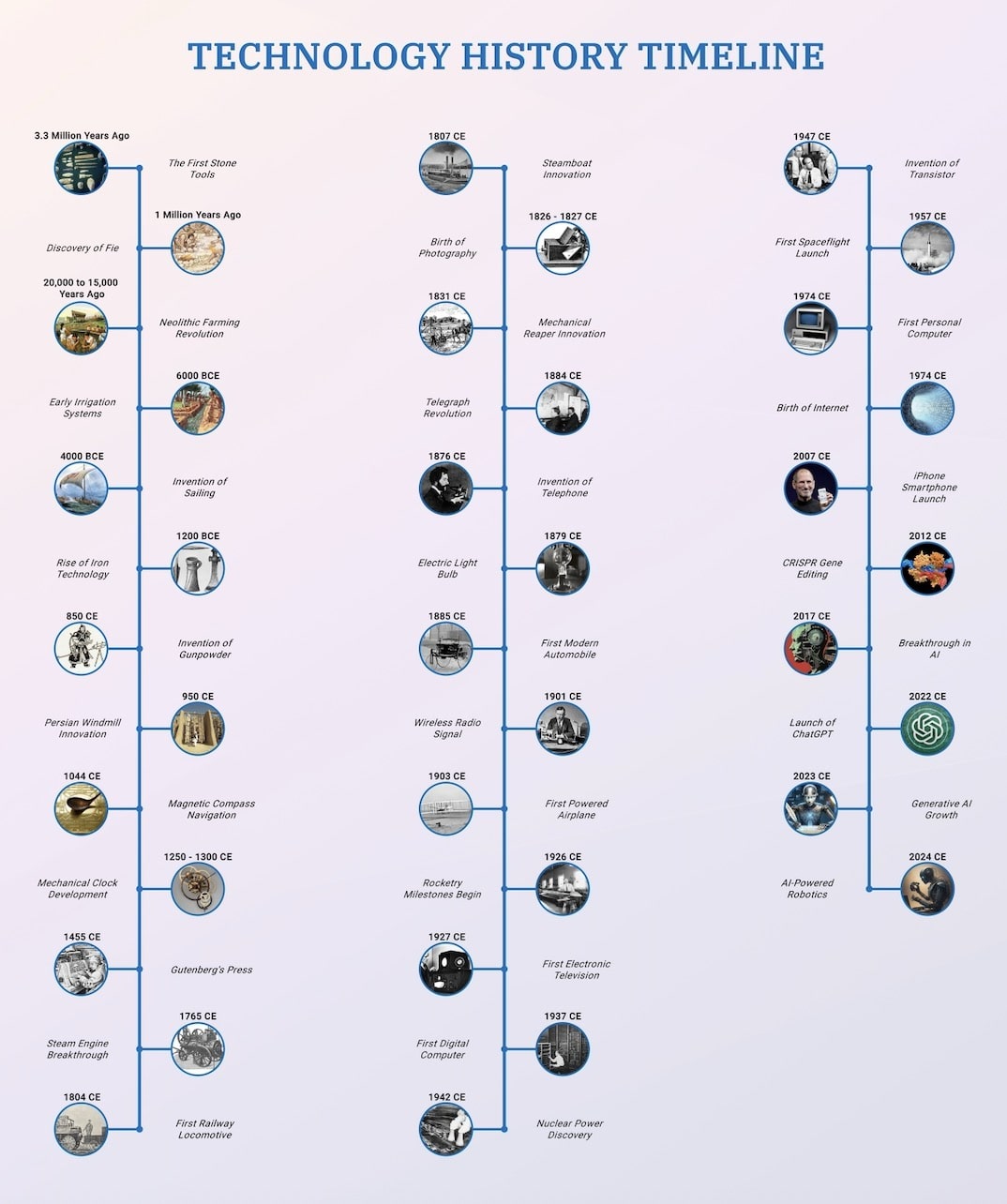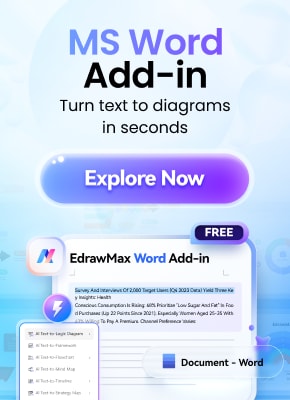Little by little, we get better. When humans wanted to communicate, they first drew symbols, then invented writing, printing, telegraphs, and eventually the internet. Each new idea connected people in ways never imagined before. Technology started as simple tools, but curiosity and problem-solving turned it into something much bigger.
This technology timeline is a way to see how small beginnings turned into massive changes. It’s a story of human imagination, problem-solving, and steady progress.
Technology Timeline
Technology has influenced people’s lives for more than 3.3 million years, beginning with crude stone tools. Early humans discovered fire, providing warmth, protection, and a way to cook food. Over time, each invention solved real problems and inspired the next. Milestones such as the printing press, the steam engine, and AI marked major turning points in human history.
Let's have a closer look at how innovation started small and grew into something remarkable. Each breakthrough tells a story of creativity, survival, and human ingenuity.
3.3 Million Years Ago: Early Tools
Technology’s story begins more than 3 million years ago. Our ancestors weren’t just wandering, they were using tools. Scientists found sharp stone flakes for cutting and big rocks for hammering at Lake Turkana in Kenya.
These finds show technology didn’t start with Homo sapiens. Even breaking stones to cut or pound laid the foundation for inventions that would come much later.
1 Million Years Ago: Discovery of Fire
Fire changed life in ways nothing else could. Homo erectus was already using it for warmth, protection, and cooking.
It wasn’t just practical, it was transformative. Fire lets communities gather safely at night, cook more varied food, and survive harsher climates. You could even say it was humanity’s first superpower.
20,000-15,000 Years Ago: Neolithic Farming Revolution
Humans moved from hunting to farming, allowing settlements, homes, and communities to grow.
It sparked new crafts like pottery and weaving, and innovations like the wheel. Learning to grow and store food meant humans could finally shape nature instead of just reacting to it. Civilization was taking root.
6000 BCE: Early Irrigation Systems
In Mesopotamia and Egypt, people learned to harness rivers like the Tigris and Nile to water fields.
Irrigation required planning and teamwork, but it boosted crop production and reliability. Communities that could manage water could manage cities. These systems helped societies grow, trade, and flourish.
4000 BCE: Invention of Sailing
The first sailboats navigated rivers, especially the Nile, using wind power and oars for control.
Sailing increased trade and allowed people to travel farther. Communities could exchange goods, ideas, and culture over long distances. This early technology paved the way for maritime exploration that would reshape the world.
1200 BCE: Rise of Iron Technology
Iron replaced bronze because it was stronger and more widely available. Bronze needed copper and tin, but iron could be found almost anywhere.
Iron had huge impacts. Farming became more efficient, armies stronger, and societies evolved faster. Access to better tools and weapons shifted power and expanded civilization.
850 CE: Invention of Gunpowder
Chinese alchemists accidentally created gunpowder while searching for an elixir. At first, it made rockets and fireworks.
By the 1200s, gunpowder reached Europe and transformed warfare. Castles, knights, and traditional combat methods were challenged. It became a key tool for defense and power.
950 CE: Persian Windmill Innovation
Persians invented vertical-axis windmills to grind grain, using wind instead of human labor.
Europe later developed horizontal-blade windmills. Windmills increased food production, reduced effort, and showed how humans could harness natural forces efficiently.
1044: Magnetic Compass Navigation
The compass allowed travelers to find direction even without stars. A Chinese text described using a magnetized floating fish for navigation.
Sailors could venture farther and return safely. Trade expanded, and cultures became connected across vast distances. The compass gradually shrank the world.
1250-1300: Mechanical Clock Development
Europeans installed mechanical clocks in cathedrals, replacing water clocks and hourglasses. Time could finally be measured accurately.
Mechanical clocks changed daily life. People coordinated work, worship, and travel more efficiently. Precise timekeeping helped organize societies and laid the foundation for modern clocks.
1455: Printing Press
Gutenberg’s movable-type press made books faster and cheaper. The Bible was the first major publication.
Printing revolutionized knowledge sharing. Literacy grew, ideas spread rapidly, and education became accessible. This sparked an intellectual explosion across Europe and eventually the world.
1765: Steam Engine Breakthrough
James Watt improved the steam engine, making it more efficient. Factories, ships, and trains could now harness power reliably.
The steam engine powered the Industrial Revolution. Production, transportation, and urban life transformed. Societies shifted from manual labor to mechanization, creating industries and reshaping economies.
1804: Railway Locomotive
Richard Trevithick built the first wheeled locomotive on tracks at an ironworks in Wales. People realized machines could move things on land!
Railways spread fast. Travel sped up, trade grew, and regions connected like never before. Life and business began to change rapidly.
1807: Steamboat Transportation
Robert Fulton’s Clermont sailed the Hudson River in just 32 hours. Sailing ships took four days!
Steamboats made rivers reliable for travel. Towns along waterways traded more easily, and people could reach distant places faster. Life and business were transformed forever.
1826/27: Birth of Photography
Nicéphore Niépce experimented with light-sensitive chemicals and captured the first photograph. He left a camera pointing at his courtyard for eight hours.
Photography opened a new way to record life. Moments, history, and art could now be preserved. It changed communication, science, and art forever.
1831: Mechanical Reaper Innovation
Harvesting crops used to take huge amounts of time. Cyrus McCormick invented the mechanical reaper to cut large fields faster.
The reaper revolutionized farming. Less labor meant more food, feeding growing towns and cities. It boosted productivity and transformed rural economies permanently..
1844: Telegraph Communication Revolution
Samuel Morse invented the telegraph to send messages across long distances. In 1844, he transmitted “What hath God wrought,” proving instant communication was possible.
The telegraph shrank the world. News, business, and personal messages could travel faster than ever. It connected societies, accelerated trade, and laid the groundwork for modern electronic communication.
1876: Invention of Telephone
The telegraph could send coded messages, but voices couldn’t travel, until Alexander Graham Bell made the first telephone call. “Mr. Watson, come here, I want to see you,” he said.
The telephone transformed communication. People could speak instantly across distances. It changed the pace of life, commerce, and social interaction forever.
1876: Internal-Combustion Engine
Nikolaus Otto developed an engine that burned fuel inside a chamber instead of using steam. Engines became smaller, more powerful, and efficient.
The internal-combustion engine powered cars, trucks, and airplanes. Transportation, trade, and daily life changed forever. People could move faster, explore farther, and connect across greater distances than ever before.
1879: Electric Light Bulb
Thomas Edison perfected the electric light bulb after many experiments. His design glowed steadily for over 13 hours, lighting homes and streets reliably.
Lighting transformed society. Nighttime became productive, cities safer, and social life extended. Edison’s invention started widespread electrification and introduced modern conveniences people still rely on today.
1885: Automobile
Karl Benz built the first modern car, a three-wheeled machine powered by a single-cylinder engine. His wife, Bertha, drove 64 miles, proving it could be practical.
The automobile changed transportation completely. Roads, cities, and daily life adapted. People traveled farther and faster, goods moved efficiently, and the world became increasingly connected.
1901: Radio
Guglielmo Marconi transmitted the letter “S” across the Atlantic in Morse code, proving sound could travel without wires.
Radio transformed how people received information. Music, news, and entertainment reached massive audiences. It created shared experiences and reshaped culture, communication, and society worldwide.
1903: First Powered Airplane
On December 17, 1903, Orville Wright flew 120 feet. Wilbur followed with an 852-foot flight. Together, four flights proved powered human flight was possible.
The airplane changed transportation and exploration forever. Air travel shrank the world, enabled global commerce, and inspired generations to reach beyond Earth’s limits.
1926: Rocketry Milestone Begins
Robert Goddard launched the first liquid-fueled rocket in 1926. It traveled just 41 feet from his aunt’s farm.
It was a small start but huge for space exploration. Rockets would later carry humans to the Moon, launch satellites, and explore the solar system. Goddard laid the foundation for humanity’s journey into space.
1927: Television
Philo Farnsworth transmitted the first electronic image in 1927. It was just a horizontal line, but it proved moving pictures could be sent electronically.
Television changed entertainment and communication. People could watch news, shows, and events from home. It became central to culture, education, and information worldwide.
1937: First Digital Computer
John Atanasoff and Clifford Berry built the Atanasoff-Berry Computer (ABC). It used binary numbers and capacitors to store data, the first digital computer.
Digital computing transformed problem-solving. Calculations became faster and more accurate. It paved the way for scientific research, business work, and personal computers that would eventually reshape everyday life.
1942: Nuclear Power Discovery
Enrico Fermi and his team ran the first controlled nuclear chain reaction in Chicago. It was research into atomic energy and weapons.
Nuclear power showed incredible promise and serious risk. It could generate electricity or fuel devastating weapons. Humanity has unlocked one of nature’s most potent forces.
1947: Invention of Transistor
At Bell Labs, scientists introduced the transistor. This tiny device controlled electric current and replaced large vacuum tubes.
The transistor launched the modern electronics era. Computers shrank, radios became portable, and innovation in communication and computing sped up. It helped shape the technology-driven world we live in today.
1957: First Spaceflight Launch
On October 4, 1957, the Soviet Union launched Sputnik 1, the first artificial satellite to orbit Earth. It just beeped, but it showed that humans could reach space.
Sputnik sparked the space race. It pushed technology forward, led to new scientific discoveries, and eventually helped put people on the Moon. Satellites also began changing how we communicate, navigate, and observe our planet.
1974: First Personal Computer
Computers once filled entire rooms, but in 1974 the Altair became one of the first machines small enough to sit on a desk. Personal computing became possible for individuals.
This democratization of computing changed society. People could now program, work, and innovate from home or small offices. It paved the way for Apple, Commodore, and the explosion of PC use.
1974: Birth of Internet
Vinton Cerf and Robert Kahn developed TCP/IP, enabling computers to share data in packets across networks. This became the technical foundation of the Internet.
The Internet transformed communication, commerce, and entertainment. Emails, websites, and online collaboration became possible. It connected people worldwide, creating the digital age we live in today.
2007: iPhone Launch
In 2007, Apple introduced the iPhone. It wasn’t the first smartphone, but its touchscreen, apps, and mix of web and music changed how people used technology.
Smartphones reshaped everyday life. They put powerful computing, cameras, and communication tools right in your pocket. Work, social life, and entertainment all changed, kicking off a new era of mobile connectivity.
2012: CRISPR Gene Editing
Jennifer Doudna and Emmanuelle Charpentier developed CRISPR-Cas9, a tool that can cut and edit DNA with incredible precision. This opened the door to treating diseases and changing genes.
CRISPR also brought big ethical and scientific questions. It has huge medical potential, but it makes us rethink what’s natural and introduces the possibility of “designer” biology.
2017: Breakthrough in Artificial Intelligence
In 2017, AlphaGo, an AI program, defeated the world’s best Go player and then beat itself repeatedly. It is learned by playing millions of games, demonstrating machine learning’s power.
This milestone marked AI’s rapid evolution. AI was no longer just computational, it could learn, strategize, and adapt. Industries, research, and everyday life began to feel the impact of intelligent machines.
2022: ChatGPT
OpenAI released ChatGPT, letting people talk to AI in natural language. Millions signed up in just days. They were amazed at how it could write, answer questions, and hold a conversation.
ChatGPT showed that AI could be useful and easy to use. It became a tool for learning, work, creativity, and fun. For millions, AI has become part of everyday life.
2023: Generative AI Growth
Generative AI tools like ChatGPT, MidJourney, and DALL·E expanded creative possibilities. Users could produce text, images, and music simply by typing prompts.
These tools reshaped creativity and productivity. Students, designers, programmers, and writers could experiment, generate ideas, and complete tasks faster. AI became a collaborative partner rather than just a tool.
2024: AI in Robotics
Robots enhanced with AI gained the ability to understand speech, move fluidly, and perform tasks independently. Companies like Tesla showcased robots doing practical work.
This development blurred the line between machines and coworkers. Robots could learn, adapt, and assist in real environments. It’s a major step toward making smart, responsive robots part of everyday life.
How to Make a Technology Timeline in EdrawMax?
A technology timeline shows key inventions and tools over time. It helps you see how one step led to the next.
If you are new to diagramming, EdrawMax, a comprehensive timeline maker, is easy to use. It has ready-made templates and simple design options. Here's how you can make a Technology Timeline:
Step1Start With a Blank Canvas
- Open EdrawMax on your desktop.
- Log in or sign up if you don’t have an existing account.
- Click New on the left panel and select Blank Drawing to open a new canvas.
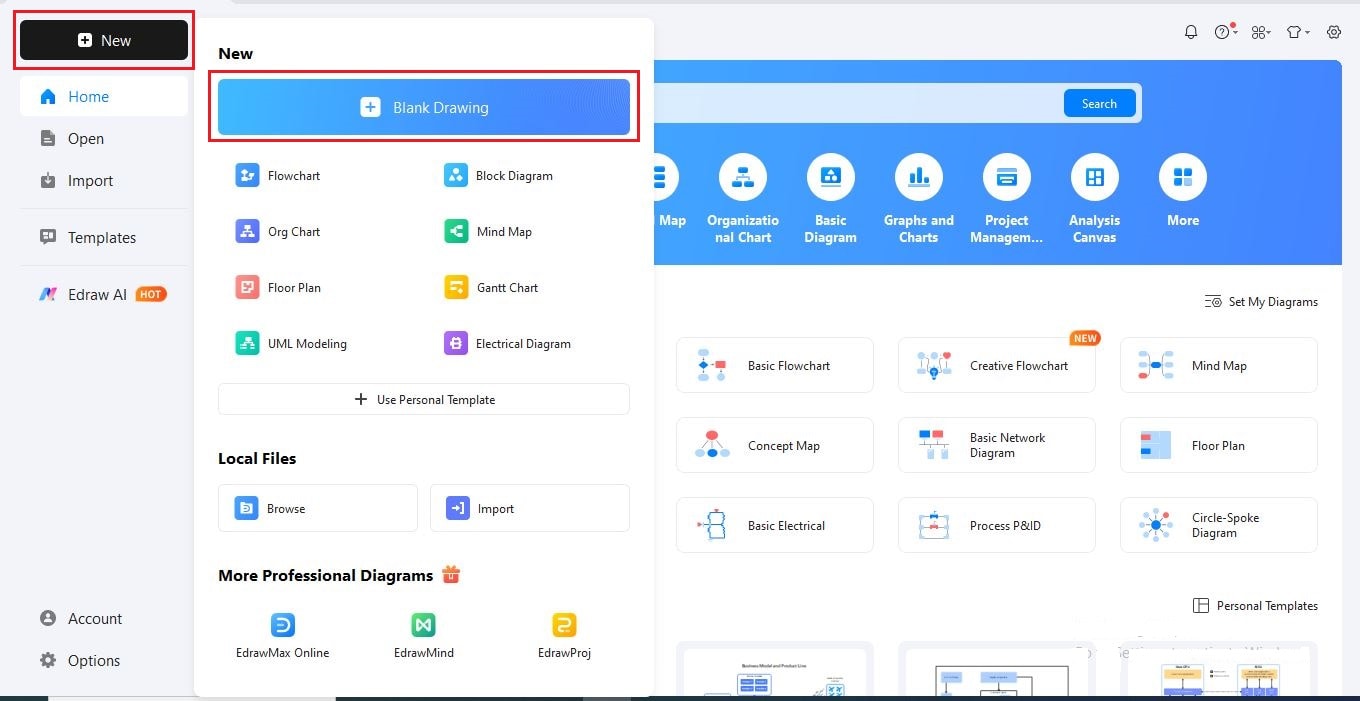
Step2Insert Background Image
- Go to Insert > Picture > Local Pictures to upload an image for your timeline’s background.
- Click the image to open the customization panel.
- Use Adjust to modify brightness, contrast, or transparency as needed.
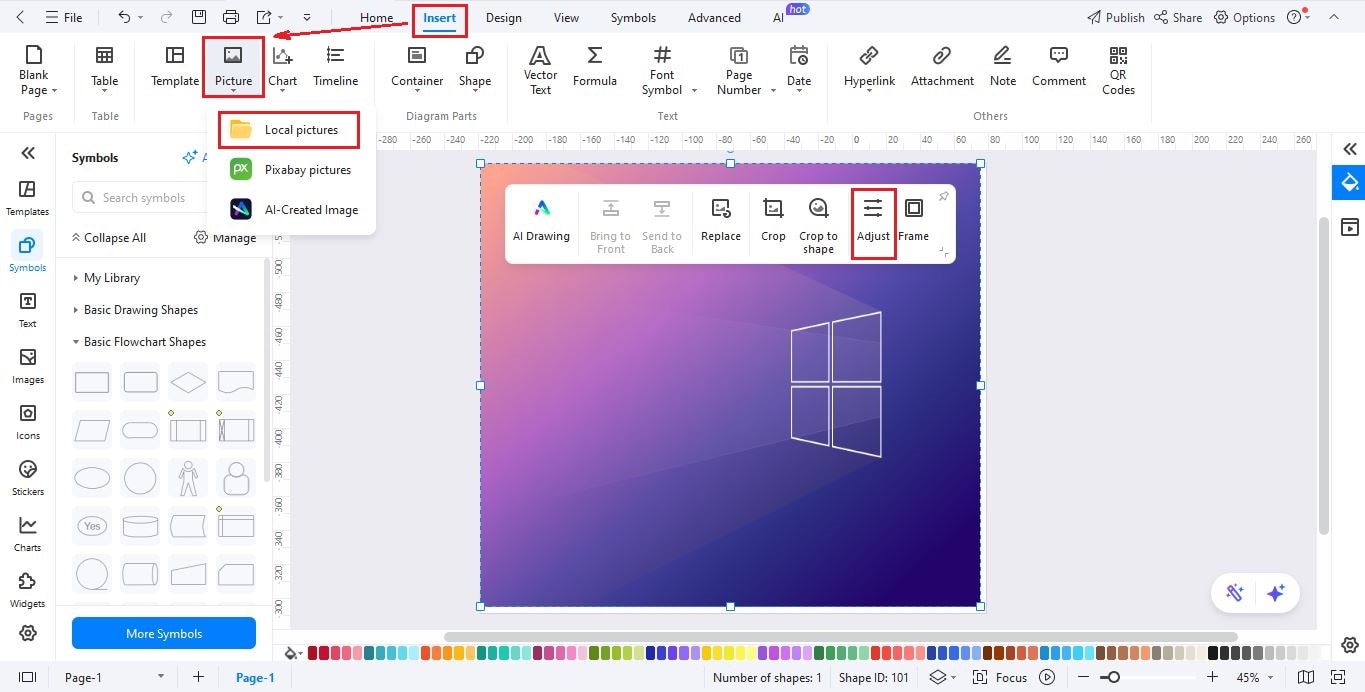
Step3Add a Heading to the Timeline
- Add a heading using either a text box or an image.
- To insert a text heading, click Text on the left side panel, and then choose Click to Add a Title.
- Customize the fonts style, color etc using the top toolbar bar, or the floating toolbar.
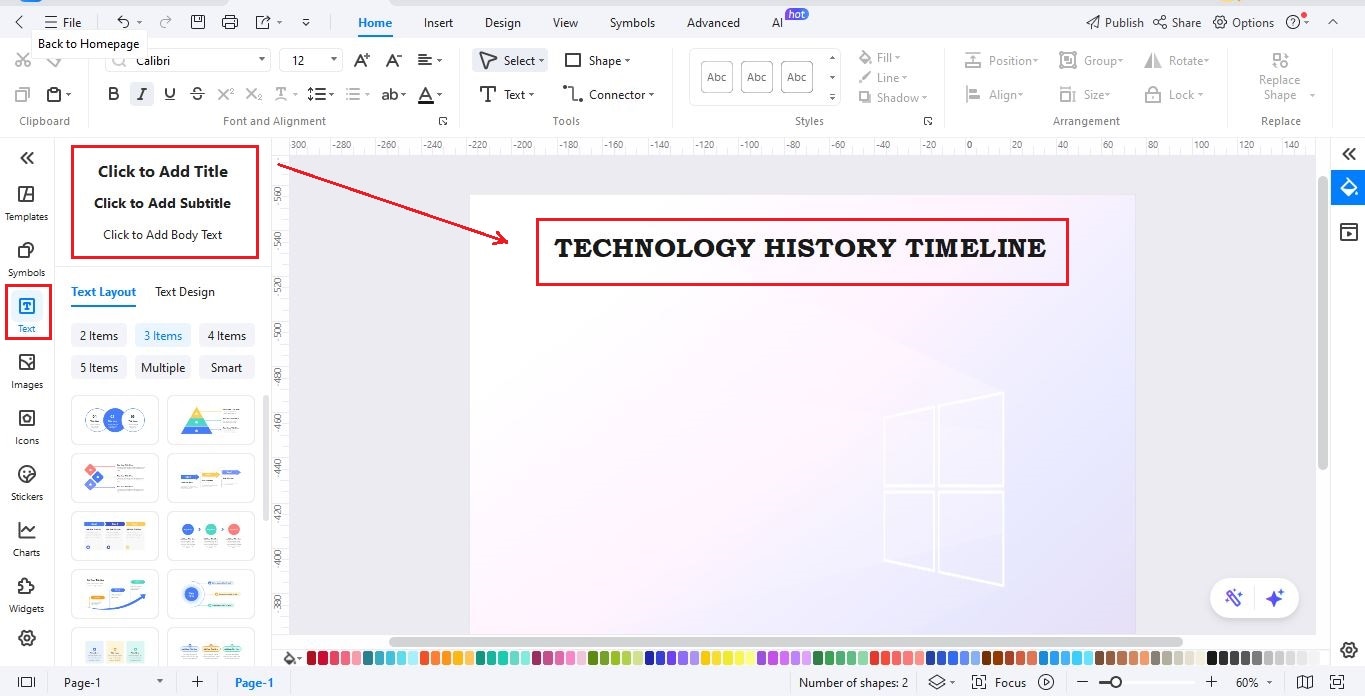
Step4Insert the Timeline
- Click Insert on the top toolbar.
- Select Timeline, then scroll to Vertical Timeline.
- Choose the 4th option that includes image placeholders and click OK.
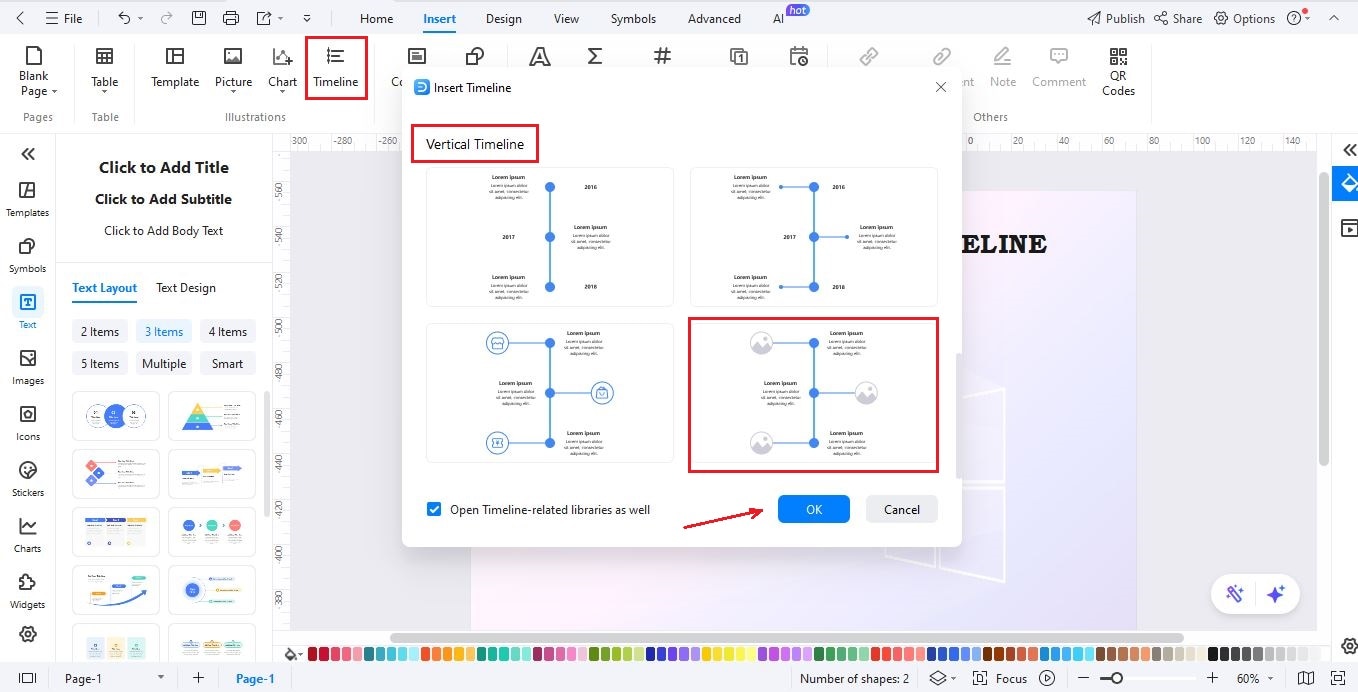
Step5Add Text to the Timeline
- Click Text on the left editing panel.
- Use Click to Add Subtitle for the year or date of each milestone.
- Use Click to Add Body to add a key highlight or description of the event.
- Repeat for all major events in your technology timeline.
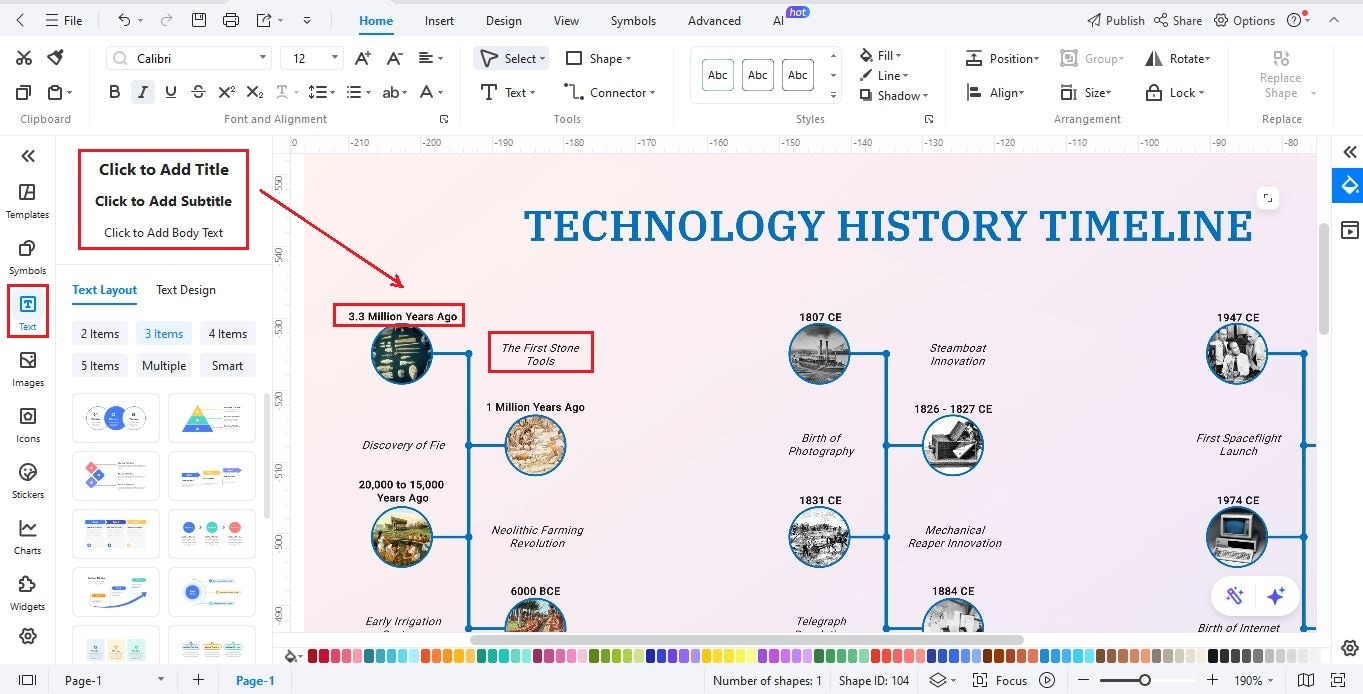
Step6Insert Thumbnail Images
- Add thumbnails to make your timeline visually engaging: Insert > Picture > Local Pictures.
- Click a thumbnail to open the customization panel and select Crop to Shape to change the outline.
- Repeat for all milestones to create a consistent, professional look.
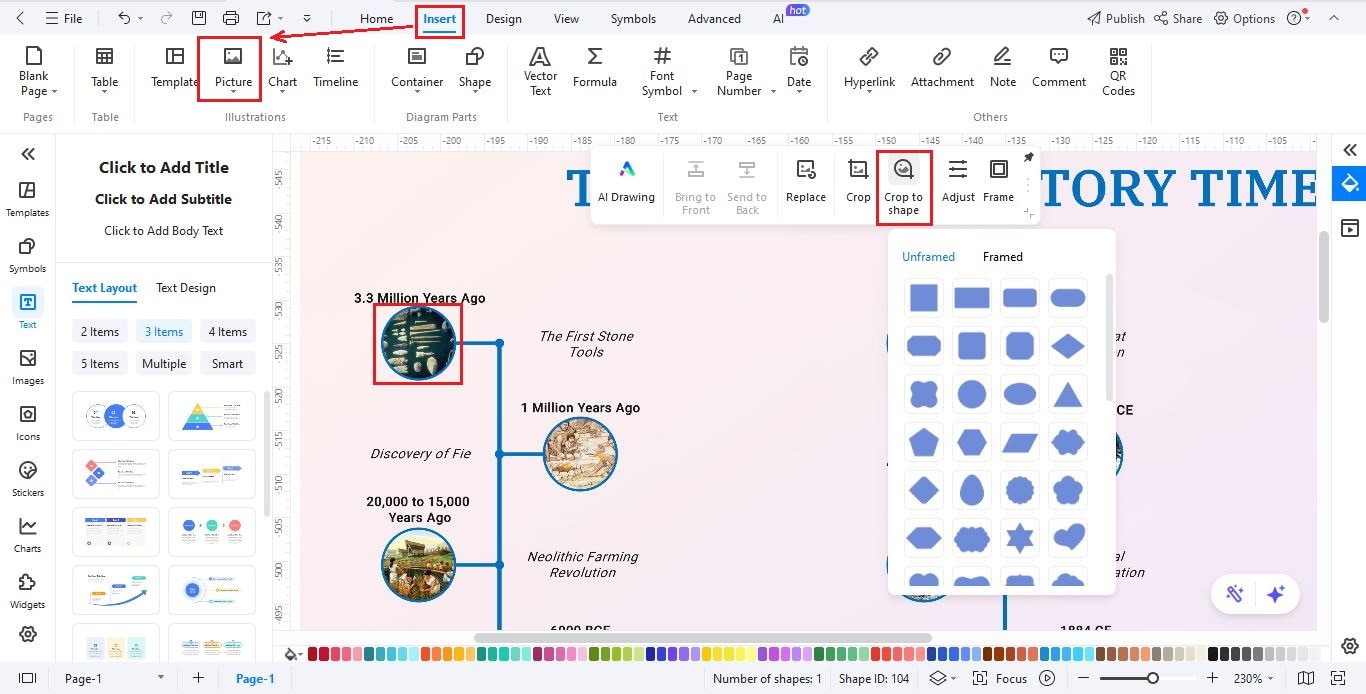
Step7Save, Share, or Export Your Timeline
- Click File > Save to keep an editable version of your timeline.
- Use the Share button (top-right) to collaborate with others or send your timeline directly.
- To export your timeline, go to File > Export and choose a format such as PNG, PDF, SVG, HTML, Visio, or Excel.
- Click Publish to share your timeline with the EdrawMax community if desired.
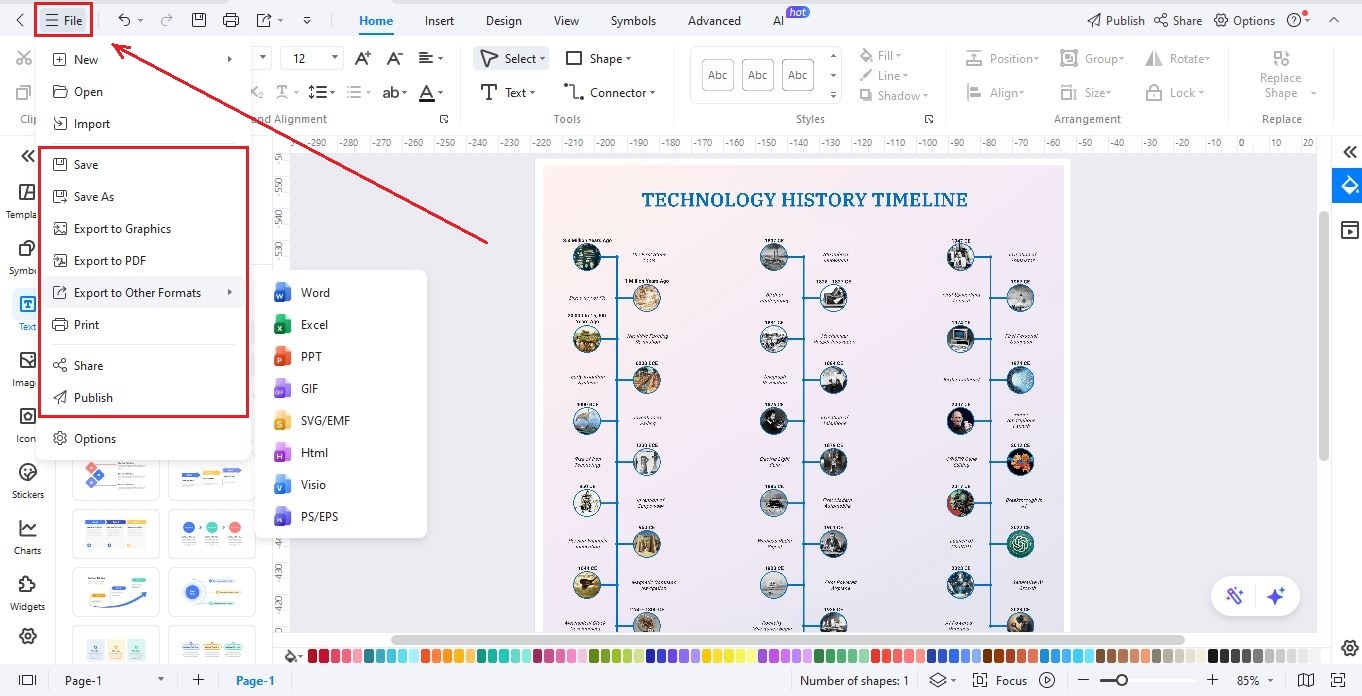
What's Next?
The next chapter of technology will be even more exciting. AI will think faster. Machines will become more helpful. Someday, we might live alongside robots that truly understand us.
Every invention starts with a question: “What if?” Exploring that question is how we build the future.
If you’re ready to bring your ideas to life and share them visually, EdrawMax is the perfect place to start. It’s easy to use and ideal for brainstorming, planning, and designing your future.




